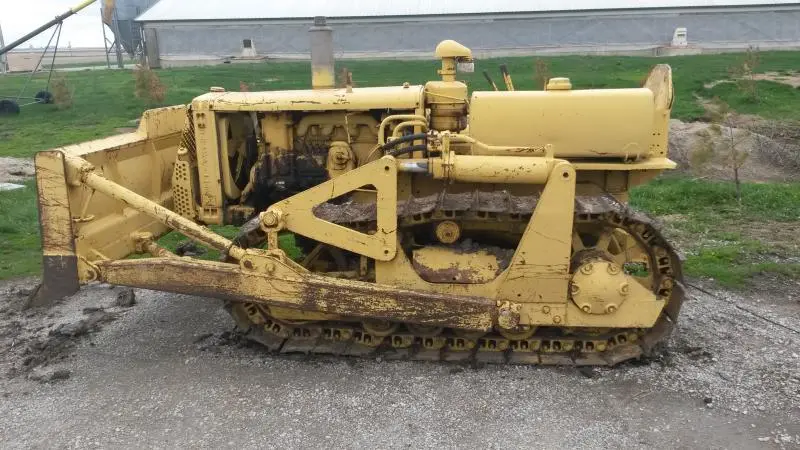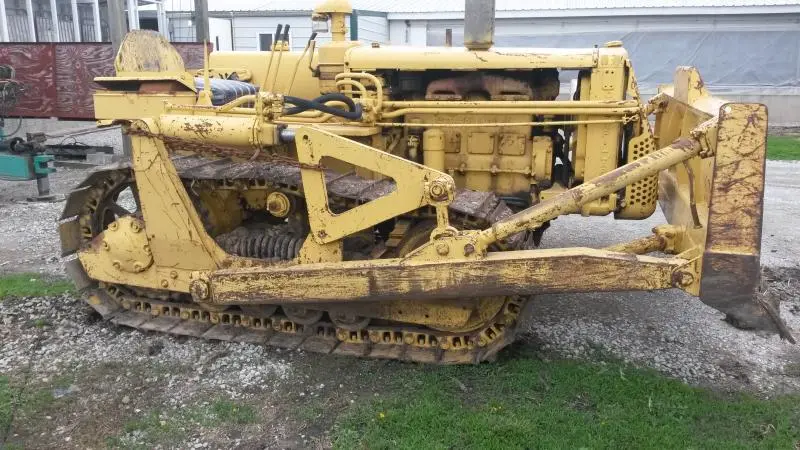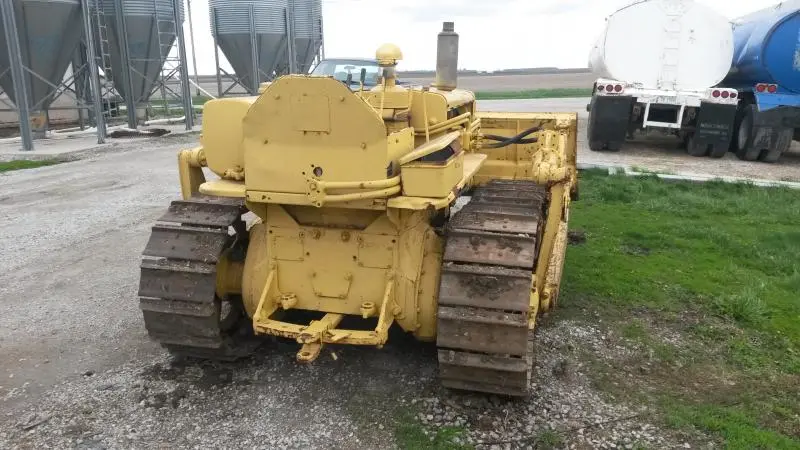


While overhauling the valve might help, odds are the cylinders probably need to be rebuilt after all these years.
Unless something is hung up or a roller/pivot etc worn out in the valve (the seals on the shaft going into the tank are the most common problem with these), there really isn't much that can be done for one. The valve itself is just very accurately machined and fitted steel and iron. If it's worn, you must replace the parts. No o-rings etc that I know of in the actual valve though there are some where the lines connect to the valve.
If yours has the diverter valve in the lines, you could try to raise the blade and then switch the diverter to lock it off and see if it still leaks down. Or if you don't have it, start it up from cold and then keep raising the blade to keep it up for a few minutes before getting off to check which cylinder is warm(er) from the oil circulating through it. Note that the pistons of most(all?) of these have valves in them that open when the piston reaches full stroke. So, you won't learn anything by holding it at full up or full down since it will be bypassing oil anyway. The valves in the pistons are a trouble spot as well as the usual piston seals which could be blown or worn out.
If you could locate some caps, you could set a floor jack or other lift under the dozer blade holding it up and then disconnect the lines from the cylinders and cap the cylinders off. Then lower the jack and see which side settles etc. There are usually a couple different versions of the cylinders on these, so any close up pictures of the cylinders will likely help get the correct parts diagram.

As you have noticed, the CAT hydraulic control hanging on the front is a compete unit containing the pump and valve inside the resevoir. While there are plenty of other systems that can be adapted, you will need not only the valve, but also a resevoir and a pump along with coupling to front crankshaft pulley and brackets, hoses etc. So for most people who already have a CAT control, it is easier and cheaper to fix any problems with it unless the pump is worn too badly to repair etc.
The oil must be drained and the front cover removed to access the valve and linkage if there are any problems with things in there. This would be something like water getting in the oil, valve sticking/not returning to hold position etc. The filter cartridge on those can be either a cheap readily available filter or a CAT only expensive one, but last time I heard, they were still available. Here's some parts breakdown of a typical #44 hydraulic control, but you should get the serial number off yours, it will be stamped on a tag riveted to the cast iron tank near the filler spout, I think usually on the side of the unit facing the radiator, so you may have to scrape some hardened dirt and oil which has turned into asphault to find it.
The dozer blade should also have a tag with serial number to help ID the cylinders etc since that all came as a bulldozer "arrangement". This is a typical small CAT tag riveted on the rear face of the blade usually on the right upper corner. If no tag there, look carefully for the two holes where the tag was originally riveted on and the number will be stamped into the steel there. There may also be part numbers stamped into the cylinders themselves. A company like Hercules Bulldog or Baum Hydraulics may be a source for your seals etc if you have no luck from CAT.
Here are a couple scans I saved that show somewhat the arrangement inside the case, but may be different from yours in small ways.
Most likely leaking cylinder piston seals.
First you need to determine whether they are early or late versions.
Look the cylinders over for a part number, 3Fxxxx is early, 8Fxxxx is late.
I'll check the cylinder leak down first since that seems the most simple for now. I have a local place that builds cylinders for various companies and does some repair. Would a shop like that be able to repair the cat cylinders or is it a specialized cat only thing. thanks.
PS: Like one poster said, learn to live with it is something I intend to do unless the fix is fairly simple and low dollar. I can imagine this dozer using up plenty of money and time and I really need it to do dirt work, not spend money on.
Repairs are not that straight forward whether early or late cylinders.
Early cylinders need a back up ring added to the cups.
Late cylinders have morfed into a multi ring mess that replaces the original.
Good luck with a cheap worn out work horse.
What I've done in the past was to dismantle the cylinders, take the worn parts to a good hydraulic shop and find cups, seals etc that are more common and up to date than the Cat parts. Then it's time to go to a buddy's shop and do a bit of machining on the pistons to fit the new cups/seals/rings.